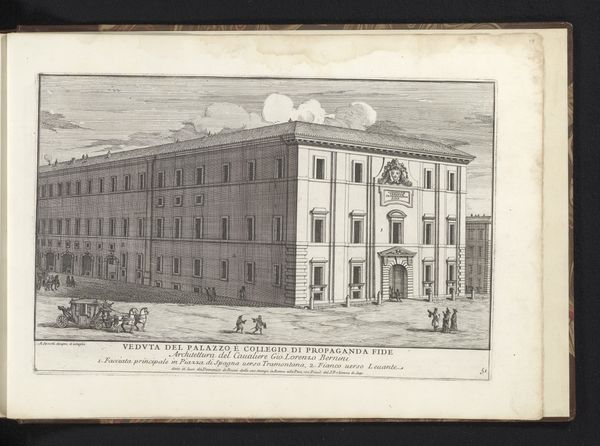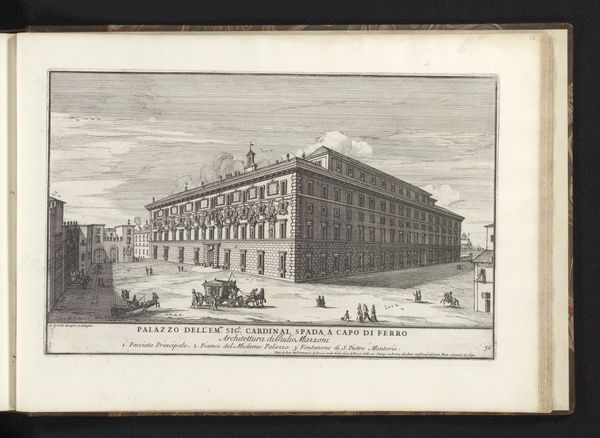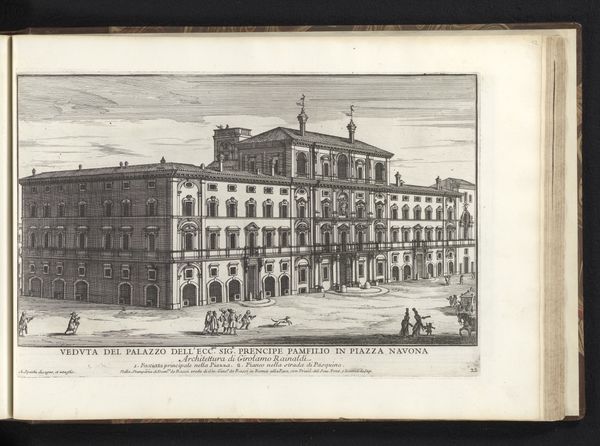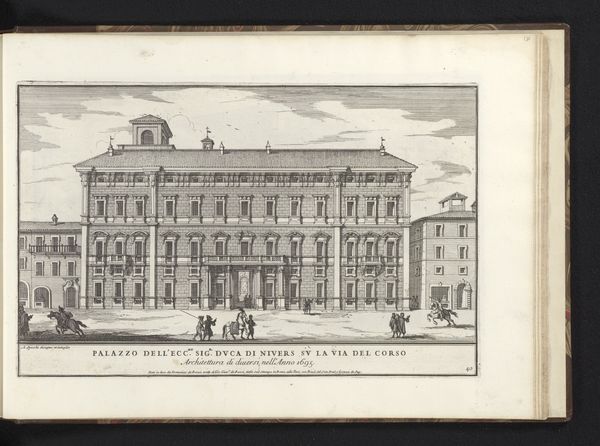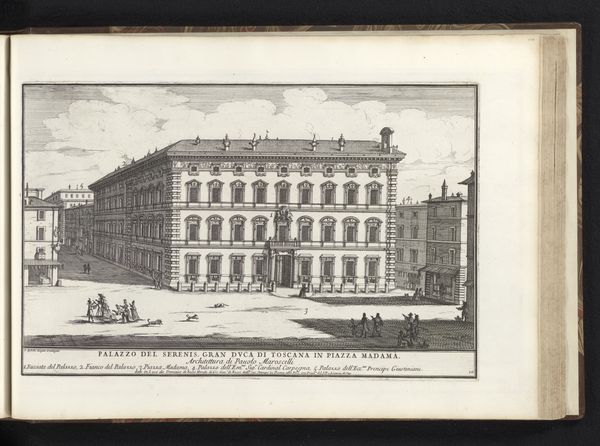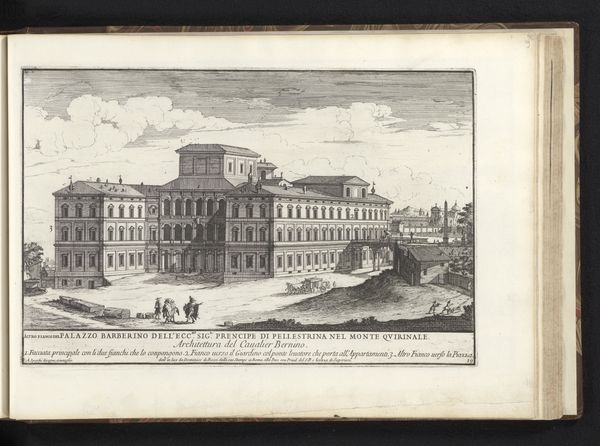
print, engraving, architecture
#
baroque
# print
#
line
#
cityscape
#
italian-renaissance
#
engraving
#
architecture
#
realism
Dimensions: height 211 mm, width 330 mm
Copyright: Rijks Museum: Open Domain
Editor: This is Alessandro Specchi's 1699 print, "Palazzo Nuñez-Torlonia in Rome." The meticulous lines capture the grand facade of the palazzo, but it feels almost...clinical, removed from the life of the city despite the tiny figures in the foreground. What story does this cityscape tell, beyond architectural representation? Curator: It tells a story of power, Editor. Think about the role of prints like this in the 17th and 18th centuries. They weren't just documentation; they were a form of architectural propaganda. The Palazzo Nuñez-Torlonia, newly built, wanted to project an image. What better way than a widely circulated print, showcasing their wealth and refined taste? Notice the careful detailing, the emphasis on symmetry and classical elements. Editor: So, it's less about the reality of the building and more about the ideal it represents? How would the average Roman citizen have viewed a print like this? Curator: Exactly. It's carefully staged. While portraying an aspect of Realism, its message transcends pure replication. For the average citizen, this image could evoke feelings ranging from admiration to envy, or even resentment. It depends on their relationship to the Nuñez-Torlonia family and the socio-political climate. Who has access and control in this era? Whose stories are prioritized over others? Editor: I see, it’s more than just a building; it's a statement about social hierarchies and the power of the elite within the cityscape. The print itself is an instrument in shaping public perception. Curator: Precisely. Consider who commissioned and distributed these prints. Who benefitted from their circulation? By framing the building in this way, the print reinforces existing power dynamics. It wasn't merely capturing a likeness; it was constructing a narrative. Editor: It's fascinating to realize how much this single image, seemingly objective, is actually embedded in the politics of its time. I initially saw it as a straightforward depiction, but it's clearly so much more. Curator: And that, Editor, is why studying art through its historical context is so important. The art reveals social contexts, when interrogated.
Comments
No comments
Be the first to comment and join the conversation on the ultimate creative platform.



